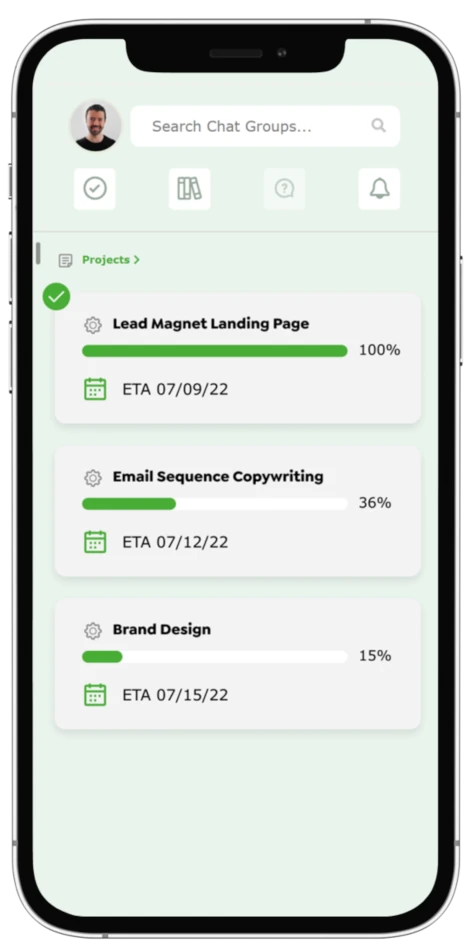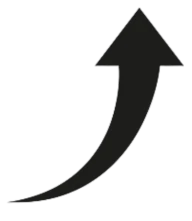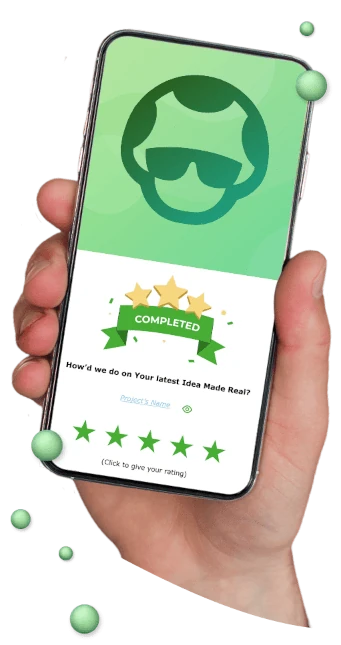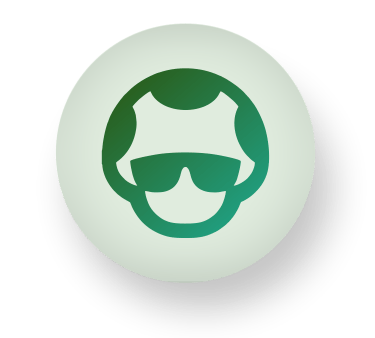What Is A Survey Funnel?
Some years ago I heard an interview with entrepreneur Ryan Levesque.
He was describing a type of funnel I’d only heard about in passing…
The Survey Funnel.
He explained how he was able to achieve extraordinary conversion rates with this type of funnel.
We’re talking 200-300%+ conversion growth compared to what you might normally see. I was skeptical...
You send traffic to a page, he explained, convert them, ask several simple survey questions based on who they were and their interests.
And then email automation would work continuously to engage those people based on their survey responses.
The survey funnel was like an invisible machine behind the scenes that chugged out personalized email content.
The whole concept made perfect sense: find out what people want, and then give it to them. But I had to test it to believe it…
At the time, AutoGrow’s open rates weren’t anywhere near where I wanted them to be. Our engagement rate was hovering around 10%.
Fast-forward 6 months.
I implemented a survey funnel of our own. We came up with different avenues, or “buckets”, to put subscribers into based on their interests, and created personalized emails to follow up with each segment.
As a result, we immediately started seeing more leads and sales for our services and info products.
Today, our interaction rate is at about 31%. It’s tripled, in part due to this practice.

Some days, it even jumps up to 40%.

And I’ve noticed whenever we turn the survey funnel off, the interaction rate dips back to about 9%, sometimes as low as 4%.
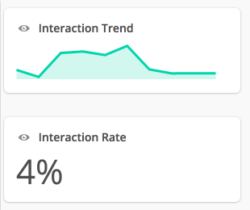
Interested in whether a survey funnel could grow your business? If so, then read on because in this post:
- I’ll define more what a survey funnel is
- How to create your own survey funnel in less than 10 hours
- The tools you can use to set it all up
- I’ll also include some case studies so you can see examples of how other businesses succeeded with survey funnels.
Let’s get funnelin’
What Is a Survey Funnel?
A survey funnel is a simple but powerful digital marketing mechanism that asks a user to answer a short survey before or after opting into your email list. The data input on the survey form is then used to personalize the follow-up content for the subscriber. With more relevant content, subscribers get more value, and both engagement and conversion rates grow.
Speaking from experience having created and recreated our survey funnel at least 3 times, you can make your funnel highly, highly personalized but…
While it’s generally true more personalized = more relevance = better results…
The deeper down the personalization hole you want to dig,
(1) the more complex of the funnel will be to maintain later, plus–
(2) there is a point of diminishing returns.
So keep it simple to start. For example:
I recommend keeping the list of survey questions short: between one and three questions max.
When we launched the 1st version of our survey funnel, here’s what it looked like (see below).

Note how there’s not much text, but the text (and video) which is there is designed to sell people on the benefits of answering the questions.
Remember: keep it simple.
These days we’re using a special new form / personalization tool (which I’ll tell you about here coming up) to implement the survey funnel:
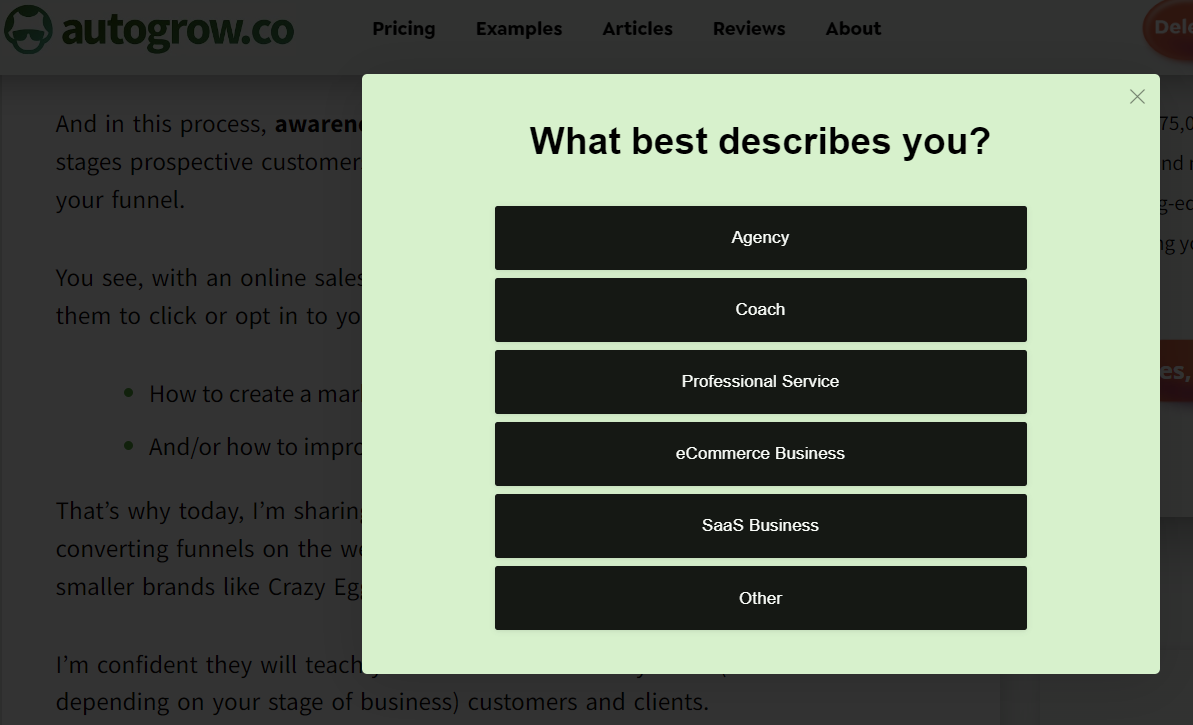
You probably want to know how to segment for your audience and target market, right?
Read on for the answer… (oh and the upcoming survey funnel examples will blow your mind so hope you’re pumped to check that out )
How to Segment Your Audience with The Survey Funnel
You want to know what are the “right” questions to ask so you don’t have to guess.
Now of course, you can use a survey funnel to segment your audience based on any criteria you can think of.
For example, if you’re a fitness company, you might decide to segment your emails based on those who are exercising regularly and dieting, and those who are exercising sporadically and having a hard time with their diets.
Those are two vastly different audiences, yet your products or services could appeal to both, and the pitch would be personalized.
But what I recommend from our experience survey-funnelin’ 10,000’s of optin leads is the following for the survey questions:
1. Ask them first what problem they want to solve. This is the mort important question to ask. And of course it should relate back directly or indirectly to whatever service / product you ultimately wish to sell. But in the short-term, this question relates most directly to the content you’ll be sending to them after they fill out the survey form.

2. Ask them who they are. How do they identify themselves within your market? By knowing who they are, you can better tailor the tone, content, and your offers later on. This question is optional when you’re getting started. I’ll explain below.
3. Ask them how they prefer to solve this problem. This question will tell you how qualified the optin is as a potential buyer. If you offer a done-for-you service that costs >$1,000, but the optin prospect says “I’m more likely to solve this problem by doing it myself” then you know it’s not a fit. This is also the most optional, especially if you only have 1 product or service. But if you have multiple offerings that serve different segments of the market, this data helps you know which of your offers to pitch later on. Below is an example of how this question might look.

Ok so why did I say question 1 the most important and questions 2 and 3 are recommended as optional when you’re getting started?
First, the more questions you ask, the lower your conversion rate on the form. The rate you want to aim for is 40-50% (we achieved 40% on our first implementation time ago, it’s an easy “sell” if people understand how it’s valuable to them).
Second, let’s say you ask both questions 1 (problem) and question 2 (who are you). And lets say for each question you have 5 possible answers, and let’s say you’re going to have 5 follow-up emails for each segment. And Problem + Who = 1 follow-up segment, got it?
All right now do the math of that.
5 “problem” answers x 5 “who are you” answers
= 25 email follow-up segments
5 emails per segment x 25 segments
= 125 emails
This was you before you read that:
And this is you now thinking about how much work that is:
Ok but don’t despair because if you start with just question 1, then it’s knocked down to 25 emails – which is much, much easier.
Plus, if you work with someone (i.e. an all-in-one digital marketing team) who can just do it all for you, it’s a piece of
What Tools Do You Need for Your Survey Funnel?
I recommend using the following tools to create your own survey funnel:
- Cognito Forms: Cognito is one of the best form builders out there and they don’t get enough recognition. We used to use Wufoo in the past but moved away from them after Survey Monkey Acquired them and the product got worse. With Cognito you can create a free account and then pipe the responses into your CRM with Zapier. Cognito Forms also has templates to help you get started and their UI is easy to learn overall.

Next you need a marketing automation tool that enables you to segment in both simple and slightly more complex ways (complex because, in the long term, you’ll want to keep building on it).
- ActiveCampaign: We’ve been a custom of AC for nearly 10 years. It’s not a perfect tool. On occasion we’ve run into a bug here or there but they have gotten better over time. We talked about Mailchimp’s Growth Story the other day. While their tool is great, I believe, at this time, ActiveCampaign is better because you can segment in so many ways and easily build both simple and complex funnels / automations. Some people like Drip although their pricing is higher and I have no evidence to suggest their tool is superior to AC. Here’s how the segmentation tags might look on a contact in AC after filling our your survey form:
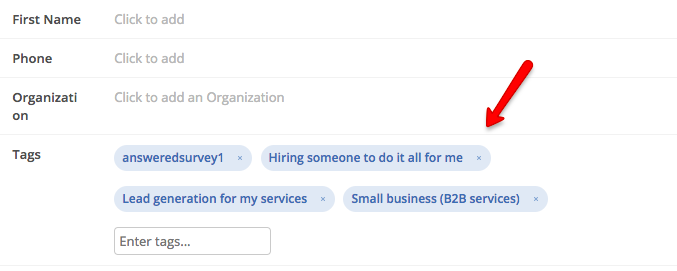
Finally, I want to tell you about a tool we’ve been using more recently.
This tool has recently replaced Cognito Forms for us in terms of our Survey Funnel, though we use Cognito for many other areas of our business.
This tool is more pricey compared to something freemium like Cognito Forms, but it’s designed for solving the personalization problem. The tool is RightMessage.
- RightMessage. It bridges the gap between your website and your CRM / email marketing tool (e.g. ActiveCampaign). You build your pop-ups and survey forms in Right Message and they appear on your website. However, you can also segment the questions or even your offers that it shows. For example, someone also opted into your list? It can detect this and show them a CTA to buy instead of opting in again. Pretty cool right? But it get better: you can make any or all of the text on your landing pages personalized. Say a lead fills out your survey, says “I want to re-design my website” and you are an agency offering that and other marketing services. Well, RightMessage can detect this when they arrive back on your homepage, and instead of advertising all your offerings, the design and/or copy can be tailored to focus on website re-design.
Now, tools are great, but how about implementing?
How to Create Your First Survey Funnel in Under 10 Hours
Now that you have the tools you need for your survey funnel, you can finally start building it.
By following these steps, you can make your own survey funnel in under 10 hours.
That’s a lot faster than my version 1—the first time I create a survey funnel in 2015 it took me about 40 hours of work.
If 10 or less hours still sounds like a sizable commitment, consider the benefit for delegating it (and any other marketing project) to your AutoGrow team…
Is the cost of building and maintaining your survey funnel over time worth it?
Pros:
- 2-4x higher engagement, again these are the numbers we’re seeing consistently over years. (note: higher engagement = higher open and click rates, more likely to come back to your website, more likely to reach the inbox rather than spam / unsubscribe / fewer or no spam reports)
- Build a stronger relationship with your audience (many people on your email list may never buy, but if they get value they are likely to help spread the word and refer leads to you who will buy).
- More sales and leads. Examples and case studies on this point are coming up in the final section, stay tuned. We’ve certainly seen a meaningful uptick in sales and leads when we have it implemented compared to when it is turned off.
Cons:
- It can be a lot of content to write, if you write it yourself.
- You’ll want to maintain it and keep it updated at least 1-2 times per year for best results (the market is always changing, new developments occur, and you probably want to share new knowledge with your prospective customers and clients to continue to build goodwill, authority, trust).
- You’ll want to add more to it over time but you’ll need to decide where the line is as far as conversion-benefit vs. maintainability. Our newest survey funnel is 100s of emails big, but we’ve made this investment to give maximum relevance to our readers, and also in general to showcase our best content (Pro Tip: survey funnels can be much easier to build if you simply repurpose existing, winning content).
The juice is worth the squeeze in my professional view
With the pros and cons covered, here are the steps to get your funnel up an running and working in under 10 hours:
Step #1: Identify (1) 3-5 “what problem do you want to solve?” segments or “buckets” (e.g. I want to get more SEO traffic, I want to drive leads with ads, etc) and (2) also create 3-5 audience buckets (e.g. exercises regularly, can’t stick to a diet, etc.).
Try not to create more than five as discussed in the previous sections. Even if you have a huge audience, making more than five buckets quickly can feel daunting.
If you keep it simple, the work to do it is manageable and you’ll get it done and see results sooner
Step #2: Integrate these segment “buckets” into your survey form, and make sure the form displays for people opting into your list. Ideally you want to survey:
- After they’ve input their email, but before they can access your lead magnet.
- Or before they enter their email. This is what we’re currently testing.
This way you have their contact info to follow-up, but they need to take a few seconds to fill out your survey before immediately accessing the freebie.
Step #3: Sending Personalized Content.
For new optin leads, the vast majority will not be ready to buy at the time of joining your list. The best to nurture each lead to this point is send content that is truly valuable. In other words, it helps them to solve a problem.
“But 25+ emails for version one of my survey funnel? Matt, that’s a lot of work!”
A growth-hack (lazy-hack?) to get around producing all content needed from scratch is the following:
- Pro Tip: the fastest way to create all the content for your survey funnel (v1) is to repurpose existing content. Ideally, your existing content. If you have no content (no blog, email courses, lead magnets you can drip out but in a tailored / edited / specifically-chosen-for-that-segment fashion… Well you can simply repurpose the expert content of credible sources in your market (with proper credit and attribution where needed of course).
Step #4: Linking the funnel into your offer (time to sell).
Whatever your business sells (professional services, SaaS, info product, ecommerce, coaching…) your ultimate goal is to sell more of it.
Your new survey funnel integrates easily with any existing follow-up sales funnel or sales-email-sequence.
After a lead goes thru your sales funnel, you can simple move them into an email automation that educates or pitches them on the benefits of what you’re offering.
Now there are higher and lower converting ways of doing this. But again, you can keep it simple to start and simply drop your leads (gracefully) into a sales email sequence.
If you have some sort of “heads-up” or transition email, this might help. A transition email (e.g. “hey in the next few days, I’m going to tell you about what we offer as a business and here’s how it’s relevant to you…”) builds positive-anticipation. It also means the transition from free-content to educating on your offer will not feel abrupt.
Alternatively, a more advanced / potentially higher converting way to move contacts from “optin leads” to “likely buyers” follow-up is based on their own actions.
For example, rather than automatically dropping email contacts into a sales sequence at the end of the survey funnel, you would instead wait for a clear signal from them that they might want to buy.
For example, if they visit a key page, or opt-in to a bottom of your funnel lead magnet (e.g. a demo video like we have), then you could move them from the survey funnel (free content) automation to the sales sequence (email automation).
[bluebox] Pro Tip: when framing your offer or transitioning to the sales email sequence, consider saying how the knowledge offered in the free content is only one piece of the puzzle. By contrast, having an expert coach / SaaS tool / whatever-you-sell will actually give them the full solution, and in the best / easiest way possible (and you must genuinely mean this for best results). Then continue on to educate them about the details of what you’re offering…[/bluebox]
3 Successful Survey Funnel Examples / Case Studies
IIFYM (If It Fits Your Macros) Generates $5,000 Per Day From B2C Survey Funnel

IIFYM offers solutions to a wide market of people who want to lose weight and get or stay in shape.
Their unique selling point is that you can eat whatever you want (“ditch the diet”) but still get the body you want.
The green and blue buttons above on IIFYM’s homepage represent the entry point into their survey funnel. Selecting your sex is the answer to the first question and takes you to a follow-up page where the remaining questions are answered.

According to tracked details from the business (original source no longer linkable online, maybe their competitors were copying them :) ), prior to implementing their survey funnel the business was seeing $2500 in sales per day.
After implementing: $5000 in sales per day (double the sales rate).
Not bad. I believe it.
Note how a survey funnel like this (and you can do this with yours too) works to educate prospects + agitate on the pain-point as they are filling our the questions.
“What is my body fat %? Oh interesting…”
“How active am I? Huh, well it makes sense, I’m not as active as I was in the past. That’s part of the problem.”
And so on.
The Profits Academy Brings in $47,000 on a Two-Week Facebook Ad for Their Quiz
The Profits Academy is an online course for making more money that’s geared towards entrepreneurs and business owners.
Frustrated by how expensive it was to generate leads through Facebook Ads with lead magnets (free reports, free eBooks, etc.), The Profits Academy decided to test a short landing page quiz instead.
It was called, “Are You Destined to Be a Successful Entrepreneur or Forever Be an Employee?” They paid $258 to run the quiz with Facebook Ads for two weeks.

In those two weeks, 10,000 Facebook users accessed the quiz through the ad. Of those who clicked the link to the quiz, 1,040 finished it completely. They also sent their contact information, including their email address and name.
Of those 1,040 people who opted in, a portion decided to buy The Profits Academy’s course. Anyone who didn’t buy the course was put into an email sequence to be automatically followed up with.
In the end, they generated over 30 sales, totaling $47,000 in revenue.
Guitar Mastery Method Obtains More Than 5,000 Leads in Less Than a Week
When Charlie, the founder of Guitar Mastery Method, sought to learn more about his audience, he decided to use a survey funnel.
His company, which provides online guitar lessons globally, had a huge audience with varying needs. Some were beginners who wanted to learn guitar, while others were more seasoned and wanted to grasp complicated concepts.
He decided to create a five-question quiz as part of his survey funnel.


The questions were not complicated, so it wouldn’t take a user long to take the quiz. Charlie would then rate the quiz-taker’s technique and tell them how they could improve if they signed up for his custom worksheets and videos.


By implementing this funnel, in about six days, Guitar Mastery Method obtained more than 5,319 segmented leads.
Conclusion
Survey funnels are used to segment your audience via a quiz or short survey. The concept was popularized by marketer Ryan Levesque and has 3-4x’d our engagement rate since we put it in place.
We’ve also seen immediate results in terms of a bump in sales.
A well thought out survey funnel can work for anyone and any business.
By creating your own survey funnel, you can learn more about your audience’s unique needs and then send them targeted emails for higher conversions. It also helps you keep a pulse on how the market might be changing over time.
To review:
- When creating your 1st survey funnel, you can segment your audience any way you want, but you should ideally only create five buckets or segments to start. Keep it simple, because it means less work and you can be faster to launch and see results.
- Your survey or quiz should be short in order to encourage the user to answer every question and submit their contact information. I recommend asking no more than three questions.
- Use tools like RightMessage, Cognito Forms, and ActiveCampaign to make your own survey funnel.
- When creating the content for your survey funnel, you’ll save a lot of time (instead of writing content from scratch) if you simply repurpose existing content e.g. from your blog. Make sure it is tailored to each segment's “problem” though and seen as truly valuable. A survey funnel will not make up for poorly written / untrustworthy content.
- You can still benefit from a survey funnel even if you only sell one product or service because it grows engagement, trust, and the relationship with your email list in general.
- A survey funnel can be extended beyond emails to include retargeting ads and dynamic web pages (using a tool like RightMessage for instance).
Now that you understand the basics of survey funnels, do you plan on implementing one to learn more about your audience?
How do you think this will change the way you target your audience going forward? Let me know in the comments below.
Keep AutoGrowin’, Stay Focused,




